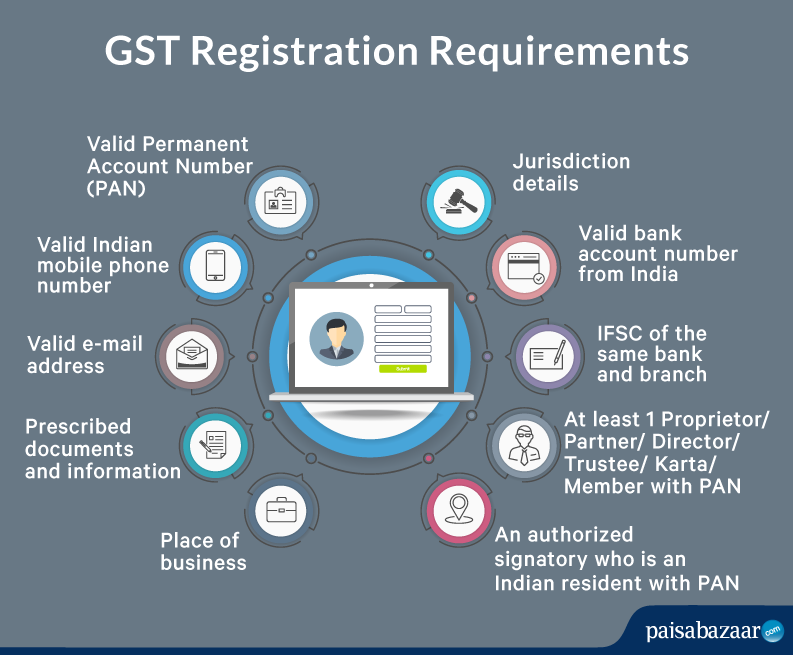How to Navigate Singapore GST Registration for Your Company
How to Navigate Singapore GST Registration for Your Company
Blog Article
The Ultimate Guide to Simplifying the GST Enrollment Process and Demands for Small Company Owners

Understanding GST Fundamentals
To comprehend the fundamentals of the Product and Provider Tax (GST) system, tiny business owners have to initially comprehend its underlying ramifications and concepts. Under the GST routine, services are called for to gather and register tax on behalf of the government, making sure transparency and conformity.
Among the essential concepts of GST is input tax obligation credit score, which allows organizations to declare credit scores for taxes paid on their acquisitions. This mechanism protects against the plunging result of taxes and advertises efficiency in the tax system. In addition, GST is a destination-based tax obligation, indicating that the tax is imposed at the factor of intake as opposed to the point of origin. This makes certain fair distribution of tax obligation earnings amongst states based on where the services or products are consumed. Recognizing these basic principles is vital for little organization proprietors to navigate the complexities of the GST system and make sure compliance with the law.
Eligibility Criteria for Registration
Having established a foundational understanding of GST principles, local business owners should currently fulfill certain qualification requirements to wage the registration process. In India, entities participated in the supply of goods or services with a yearly accumulation turnover surpassing Rs. 40 lakhs (Rs. 10 lakhs for special category states) are required to register for GST. Additionally, particular businesses such as those entailed in inter-state supply of items, informal taxable persons, and those called for to pay tax under the reverse cost device need to register for GST irrespective of their turnover. Furthermore, businesses that were registered under the previous tax obligation routine (VAT, solution tax obligation, etc) are additionally mandated to sign up under GST. However, farming companies that just provide produce out of key production are excluded from GST registration. It is important for local business owner to thoroughly analyze their eligibility based on these standards to guarantee compliance with the regulation and prevent any kind of charges for non-compliance.
Papers Needed for GST Registration

Simplified Enrollment Process Steps
Following the collection and confirmation of the requisite documents, the enrollment process for GST can be navigated via a collection of streamlined actions developed to help with reliable conformity for small organization owners. The first action involves seeing the GST website and selecting the 'New Enrollment' option. Ultimately, the applicant must complete Part A of the GST REG-01 form with information such as PAN, mobile number, and e-mail address to obtain an OTP for confirmation. Once the OTP is obtained and gone into, a Short-term Reference Number (TRN) is produced for further process. The next step calls for filling in Component B of the kind with essential organization details, submitting sustaining records, and completing the confirmation process making use of DSC or EVC. Upon successful confirmation, an Application Reference Number (ARN) is provided, showing the completion of the GST enrollment procedure. By complying with these streamlined steps, tiny business owners can effectively register for GST and make certain compliance our website with tax laws.
Tips for Ensuring Compliance
To preserve governing adherence and functional honesty, persistent oversight and positive procedures are essential in making certain compliance with GST demands for little service owners. Small business owners have to stay upgraded with GST regulations, filing deadlines, and any changes in tax rates to prevent fines and keep an excellent standing with tax obligation authorities. Attending GST awareness workshops or training programs can enhance understanding and compliance with GST laws, ultimately benefiting the organization in the lengthy run.
Verdict
To conclude, tiny organization proprietors have to recognize the essentials of GST, satisfy the qualification standards, collect required files, and comply with the streamlined enrollment procedure steps to guarantee compliance. By simplifying the GST registration procedure and demands, little service owners can avoid fines and operate their companies efficiently within the lawful framework - Singapore GST Registration. top article It is crucial for local business proprietors to stay certified and informed with GST regulations to maintain a successful business procedure
Little organization proprietors looking for GST registration should guarantee they gather and send the needed documents to finish the registration process successfully. The papers needed for GST registration typically include evidence of company enrollment or incorporation, FRYING PAN (Permanent Account Number) card of the service entity, identity and address proof of the promoters/partners/directors, photos, address evidence of the place of service, bank account statements or terminated cheques, and authorization forms. Going to GST recognition workshops or training programs can enhance understanding and compliance with GST laws, ultimately benefiting the service in the lengthy run.
By simplifying the GST registration process and needs, tiny business owners can prevent fines and run their companies smoothly within the lawful structure. It is critical for small company owners to remain enlightened and certified with GST policies to preserve a successful service procedure.
Report this page